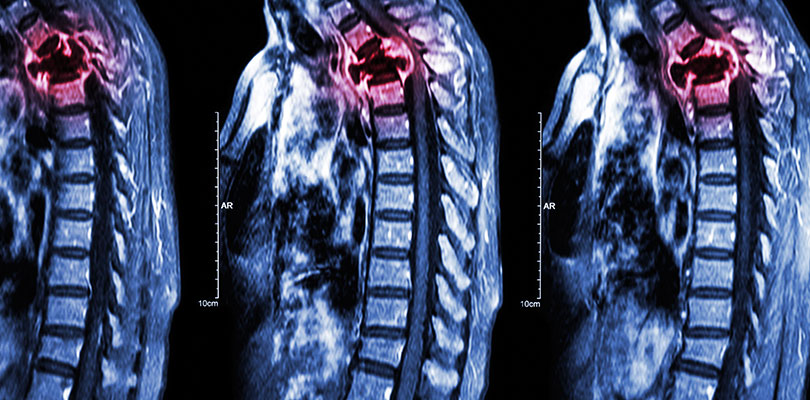Photo Credit: monkeybusinessimages / iStockPhoto.com
What You Need to Know About CML Origin, Diagnosis and Treatment
Leukemia is a cancer of the blood, and that means it can behave a bit differently than cancers that start in the organs. In some cases, the cancer can spread quickly and easily through the blood stream and lymph nodes — but not all leukemia is the same.
Chronic myeloid leukemia (CML) is a relatively rare disease, but it is often slow-growing and can respond very well to treatment. You likely won’t be able to eradicate CML completely, but there’s a good chance you can send it into remission (especially if it’s caught early). Of course, the first step is to get the right diagnosis.
Early cancer symptoms can be very mild, but it’s important to be attentive and get any change checked out. Catching CML in the two earlier stages brings a very good prognosis; a third-stage diagnosis can be much more difficult to handle.
How CML Differs from Other Leukemia
Leukemia is a cancer of the blood cells, but the cancer actually begins before the cells enter the bloodstream. Although there are several types of leukemia, they all start in the bone marrow.
Bone marrow is the spongy core of the bones where blood cells are produced, and depending on which bone marrow cells have the cancerous mutation, different types of blood cells can suffer (with different consequences to your body).
Myeloid or Lymphocytic Origins?
There are two types of bone marrow cells affected by leukemia: myeloid and lymphocytic cells. In CML, the mutation takes place in early myeloid cells, which are the immature cells that will become red blood cells, most white blood cells and platelets.
In contrast, lymphocytic leukemias begin in the immature cells that eventually become a specific type of white blood cell known as lymphocytes.
Later Onset
Some leukemias are known to hit early in life, but CML tends to appear after middle age. Nearly half of all CML cases occur in people over 65, and it’s incredibly rare in children.
Unlike many other cancers, it’s difficult to pin down risk factors for CML. The only known variable that increases your chances of developing this cancer is high levels of radiation. In most cases, the gene mutation can’t be predicted, and a CML diagnosis comes as a surprise.
Acute vs. Chronic
Whether myeloid leukemia is acute or chronic depends on how the myeloid cells mature. In chronic myeloid leukemia, the cells mature part of the way, but they fall short of “typical” blood cells. This means they can still function to some degree, and the cancer can go undetected for a quite a while, until those mutated cells crowd out all the healthy cells.
Unfortunately, CML is generally more difficult to treat than acute myeloid leukemia (AML). However, that doesn’t mean every prognosis is grim. In fact, many people find helpful treatment that sends their CML into remission, or at least controls it well for years.
Diagnosing CML
The first symptoms come on gradually and are vague enough to be shrugged off or misinterpreted for another condition: fatigue, losing weight without trying, and persistent low-grade fevers are common. However, your particular set of symptoms will depend on which stage of the disease you’re in.
Hodgkin's lymphoma can be difficult to predict. Knowing your risk factors and early warning factors to watch for can increase your outlook tremendously.
Chronic: symptoms are mild, if present at all. This is early in the cancer’s growth, so CML is easiest to treat at this stage.
Accelerated: as the disease progresses, the number of faulty blood cells rises, leading to several discomforts. Feeling very tired may be the first change you notice, followed by fever, night sweats, appetite loss and maybe bone pain.
Blastic: once the CML has moved into this late stage, symptoms are more pronounced and often difficult to ignore. Bleeding and skin changes are common, and you might notice bumps or swollen glands. Bone pain is also more common now.
Doctors have an arsenal of precise tests to diagnose your condition, but they’ll begin by asking you some simple questions, like how long have you been noticing your symptoms, and are they constant or do they come and go? Once CML is suspected, a blood count, bone marrow test and ultrasound will help confirm the diagnosis.
Since researchers have isolated the problem gene in CML, your doctor may run a specific lab test called polymerase chain reaction to look for that gene.
Coping With CML
Receiving a cancer diagnosis is never pleasant, but you can take a proactive role in your treatment and coping approaches to help improve your comfort and outlook.
Keep the Lines of Communication Open
Don’t be afraid to ask your doctor any questions that come to mind now, or in the days or weeks to come. The more answers you can get at the outset, the fewer unpleasant surprises you’ll have in the future.
Ask about what treatment will be and the effects to expect. Be sure to mention any other conditions you may be treating at the time so your doctor can take those into consideration when planning how to proceed. Try to stay receptive and patient — your healthcare team will do whatever they can to help you, and you should be able to trust their opinions.
Reach out for Support
Cancer is emotionally and financially taxing, but you have resources to help you through the hard times. Ask your doctor about social and physical support: locals groups, physiotherapists and counseling can make the road ahead much more manageable.
Ask your doctor what your insurance will cover and what it won’t. There are some alternatives if you need help to cover the costs of treatment, so it’s good to start looking into this right away.
Stay Positive and Open-Minded
It certainly can be difficult to find the bright side when you’re battling cancer, but take heart that research is always progressing, and there are probably an assortment of treatment options to try. If the first line of attack doesn’t work, don’t lose faith in your doctors or your body’s ability to overcome the disease.
For many patients, treatment will begin with targeted therapy. You may begin with tyrosine kinase inhibitors (TKIs) to slow down the growth of leukemia cells. However, if these drugs don’t send the cancer into remission, there’s chemotherapy, radiation and biologic therapy. In the most severe cases — and when there’s a donor match — a stem cell transplant could get rid of the cancer for good.







